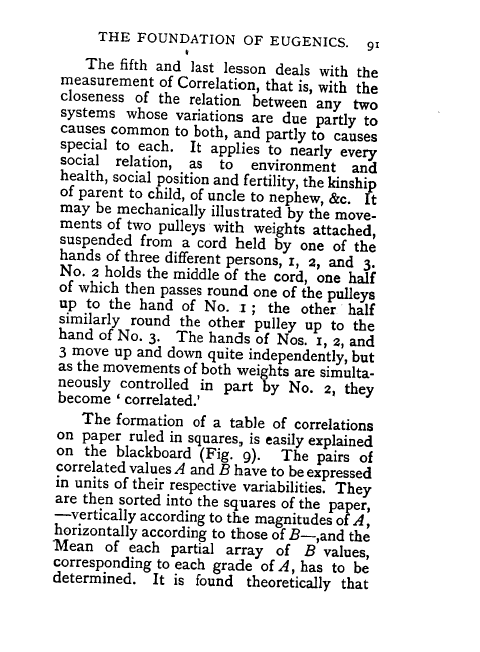THE FOUNDATION OF EUGENICS. 91
The fifth and last lesson deals with the measurement of Correlation, that is, with the closeness of the relation between any two systems whose variations are due partly to causes common to both, and partly to causes special to each. It applies to nearly every social relation, as to environment and health, social position and fertility, the kinship of parent to child, of uncle to nephew, &c. It may be mechanically illustrated by the movements of two pulleys with weights attached, suspended from a cord held by one of the hands of three different persons, z, 2, and 3. No. 2 holds the middle of the cord, one half of which then passes round one of the pulleys up to the hand of No. i ; the other half similarly round the other pulley up to the hand of No. 3. The hands of Nos. r, 2, and 3 move up and down quite independently, but as the movements of both weights are simultaneously controlled in part by No. 2, they become I correlated.'
The formation of a table of correlations on paper ruled in squares, is easily explained on the blackboard (Fig. 9). The pairs of correlated values A and B have to be expressed in units of their respective variabilities. They are then sorted into the squares of the paper, -vertically according to the magnitudes of A, horizontally according to those of B-,and the Mean of each partial array of B values, corresponding to each grade of A, has to be determined. It is found theoretically that

